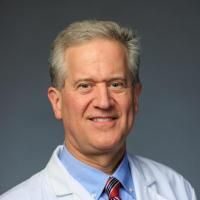HDAC genes play distinct and redundant roles in Cryptococcus neoformans virulence.
Date
2018-03-26
Journal Title
Journal ISSN
Volume Title
Repository Usage Stats
views
downloads
Citation Stats
Abstract
The human fungal pathogen Cryptococcus neoformans undergoes many phenotypic changes to promote its survival in specific ecological niches and inside the host. To explore the role of chromatin remodeling on the expression of virulence-related traits, we identified and deleted seven genes encoding predicted class I/II histone deacetylases (HDACs) in the C. neoformans genome. These studies demonstrated that individual HDACs control non-identical but overlapping cellular processes associated with virulence, including thermotolerance, capsule formation, melanin synthesis, protease activity and cell wall integrity. We also determined the HDAC genes necessary for C. neoformans survival during in vitro macrophage infection and in animal models of cryptococcosis. Our results identified the HDA1 HDAC gene as a central mediator controlling several cellular processes, including mating and virulence. Finally, a global gene expression profile comparing the hda1Δ mutant versus wild-type revealed altered transcription of specific genes associated with the most prominent virulence attributes in this fungal pathogen. This study directly correlates the effects of Class I/II HDAC-mediated chromatin remodeling on the marked phenotypic plasticity and virulence potential of this microorganism. Furthermore, our results provide insights into regulatory mechanisms involved in virulence gene expression that are likely shared with other microbial pathogens.
Type
Department
Description
Provenance
Citation
Permalink
Published Version (Please cite this version)
Publication Info
Brandão, Fabiana, Shannon K Esher, Kyla S Ost, Kaila Pianalto, Connie B Nichols, Larissa Fernandes, Anamélia L Bocca, Marcio José Poças-Fonseca, et al. (2018). HDAC genes play distinct and redundant roles in Cryptococcus neoformans virulence. Scientific reports, 8(1). p. 5209. 10.1038/s41598-018-21965-y Retrieved from https://hdl.handle.net/10161/17692.
This is constructed from limited available data and may be imprecise. To cite this article, please review & use the official citation provided by the journal.
Collections
Scholars@Duke

James Andrew Alspaugh
The focus of my research is to understand the ways in which microorganisms sense and respond to changes in their environment. As microbial pathogens enter the infected host, dramatic genetic and phenotypic events occur that allow these organisms to survive in this harsh environment. We study the model fungal organism Cryptococcus neoformans to define signal transduction pathways associated with systemic fungal diseases. This pathogenic fungus causes lethal infections of the central nervous system in patients with AIDS and other immunological disorders. In addition to being an important pathogen, C. neoformans displays well-characterized and inducible virulence determinants. It is an outstanding system for dissecting the signaling pathways associated with pathogenicity.
The main techniques used in the lab are those of molecular genetics. We are able to readily mutate C. neoformans genes by homologous recombination. Mutant strains with disruptions in targeted genes are then evaluated in vitro for various phenotypes including altered expression of polysaccharide capsule and melanin. The effects of gene disruption on pathogenicity are also evaluated in animal models of cryptococcal disease. Using these techniques, we have identified a novel G-alpha protein/cAMP-dependent signaling pathway associated with mating and pathogenicity.
This research is complemented by the other investigators in the Duke University Mycology Research Unit. The members of this research community are pursuing studies in fungal pathogenesis, identifying novel antifungal drug targets, and studying the ecology of several medically important fungi.
Keywords: Microbial Pathogenesis
Cryptococcus neoformans
Signal transduction
Fungal mating
G proteins
Unless otherwise indicated, scholarly articles published by Duke faculty members are made available here with a CC-BY-NC (Creative Commons Attribution Non-Commercial) license, as enabled by the Duke Open Access Policy. If you wish to use the materials in ways not already permitted under CC-BY-NC, please consult the copyright owner. Other materials are made available here through the author’s grant of a non-exclusive license to make their work openly accessible.
